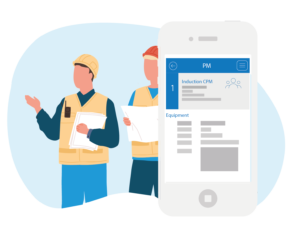Virtual cards – What you need to know
This article was written by Nexus, a partner of MRI Software.
‘Virtual’ is virtually everywhere. We’re playing virtual games, using virtual memory, and experiencing virtual reality. It comes as no surprise, then, that virtual credit cards exist as well. Just what are these virtual cards and what do they do?
Virtual cards are a form of electronic payment that’s great for accounts payable
A virtual card is not actually a card at all. It’s a randomly generated, 16-digit number that exists electronically as opposed to physically. Each virtual card number is unique and generated for a specific transaction.
Virtual cards have been making a splash with real estate companies because they offer an easy and rapid way to pay large volumes of invoices each month. They work like this:
- An email with the virtual card details is sent to the payee/supplier.
- The virtual card is processed similar to a credit card in the supplier’s POS.
- The money is transferred to the supplier’s bank, following the same rules set by his or her merchant account.
Besides ease of use, virtual cards also touch upon several other areas of interest for your accounts payable department:
- No check processing costs – When you pay by virtual card instead of check, you can cut out the supply costs associated with checks, including check stock, envelopes, stamps, printer ink/toner, etc. Plus, you can reduce the amount of time and labor dedicated to processing, paperwork, and administration.
- Rebates – You can earn lucrative cashback for purchases made with virtual cards. The more you use virtual cards, the more you stand to get back.
- Security – Since there is no plastic card issued with a virtual card, it cannot be stolen. Plus, even if a virtual card number happens to fall into the wrong hands, it has built-in security features that make it almost impossible to misuse, such as company-chosen pay limits and a limited lifespan.
- Spend controls and oversight – Virtual cards allow you to set restrictions and limits on what may be paid for, so you can enforce spending guidelines.
With these benefits in mind, is it any surprise that virtual card spend is projected to grow at 19 percent annually?
How is a virtual card different from other cards out there?
It’s important to note that virtual cards are not the same as corporate credit cards or purchasing cards (P-cards).
With these more traditional cards, you share your sensitive account details each time you make a payment. This information may be stored by suppliers and vendors, where it may be intercepted during data breaches. Conversely, when using virtual cards, you don’t need to give out your credit card details so it’s less likely that your information will fall into the wrong hands. Furthermore, since virtual cards exist in digital format only, you don’t need to pass around a physical card and constantly worry about its whereabouts.
What about suppliers, though?
You may be left wondering how suppliers feel about receiving payment via virtual cards. It’s not uncommon for them to express some apprehension about accepting them. However, it can help to share some of the benefits they can expect on their end:
- Virtual card payments clear faster than traditional payment methods like checks and help suppliers maintain their cash flow.
- With the reliability and speed of virtual cards, suppliers won’t need to call you about lost checks or late and duplicate payments.
- Suppliers receive detailed remittance data with virtual cards, simplifying their reconciliation.
- Suppliers don’t have to worry about fraud with virtual cards, since there’s no need to store and secure your financial information.
Virtual cards sound great – Where do I start?
Many AP automation solutions make it easy for real estate companies to get started with virtual cards by converting suppliers to this new form of payment. They can contact suppliers about the benefits of receiving virtual cards, notify them when payments via virtual card are made, and help them troubleshoot any issues that may arise.
Here are some of the things an ideal payments solution provider should offer and what should be on your ‘must-have’ list:
- The provider should have a strong outreach program to find the right people at your suppliers’ offices to authorize the acceptance of virtual cards.
- They should be able to work with your existing business infrastructure by fitting virtual cards into your existing workflows and accommodating your established banking relationships. In addition, virtual card payment data should sync back to your GL/ERP.
- The solution should provide transparency/visibility into the status of virtual card payments for both you and your suppliers. Each stakeholder will want to know if payments have been delivered and when.
Considering the above, virtual cards are a natural choice for secure, streamlined, and convenient payments to your suppliers. Interested in starting to use this payment method? Check out Nexus, MRI’s preferred partner for AP and payment automation.
Affordable Housing Asset Manager Insights: Maximize Portfolio Performance by Supporting Housing Operators
From rising operational costs to increased demand for flexibility and technology, asset managers are navigating unique challenges to support property management teams while ensuring portfolio health and resilience. Recent MRI research delves into the…

